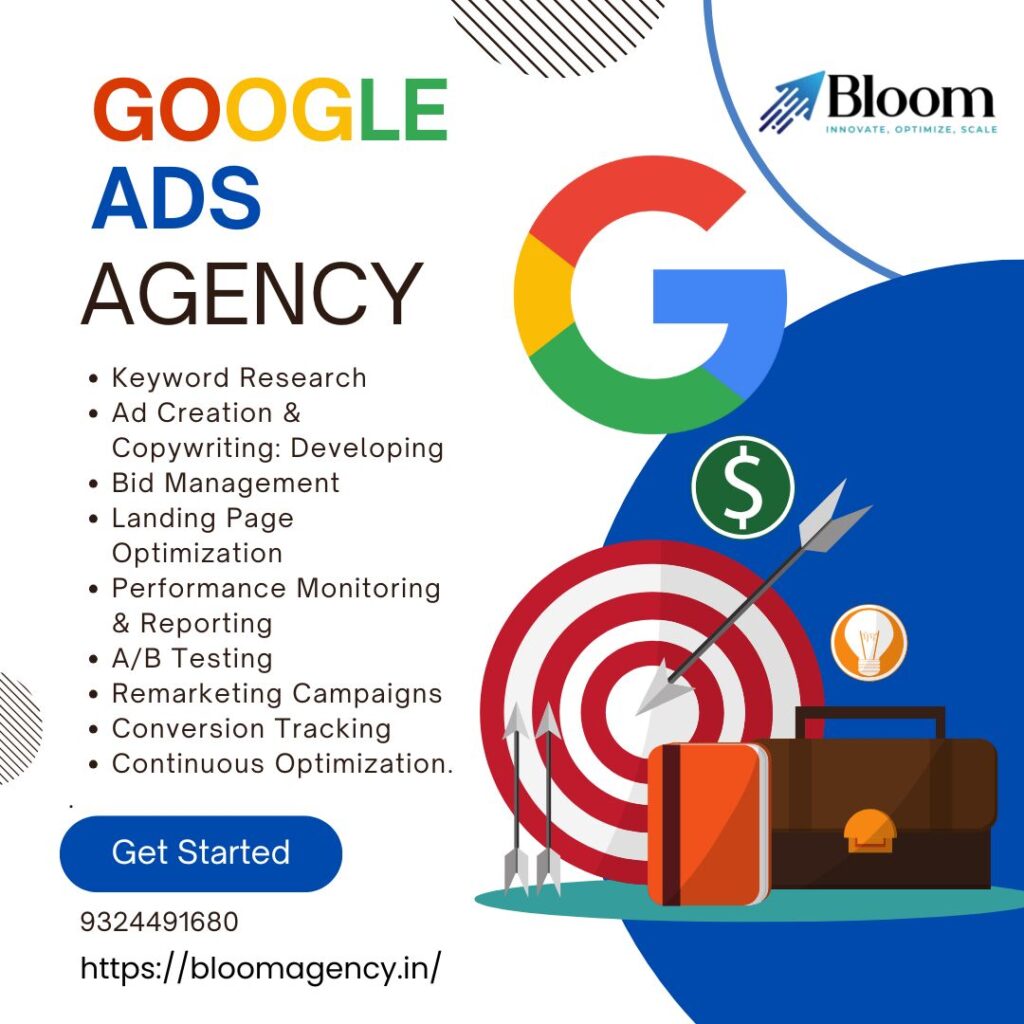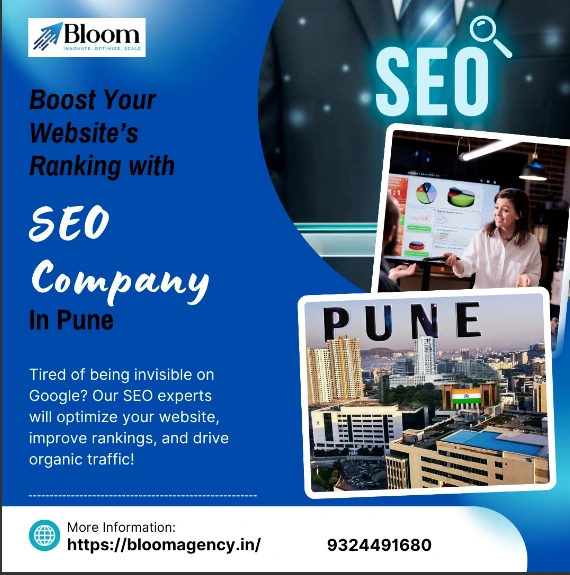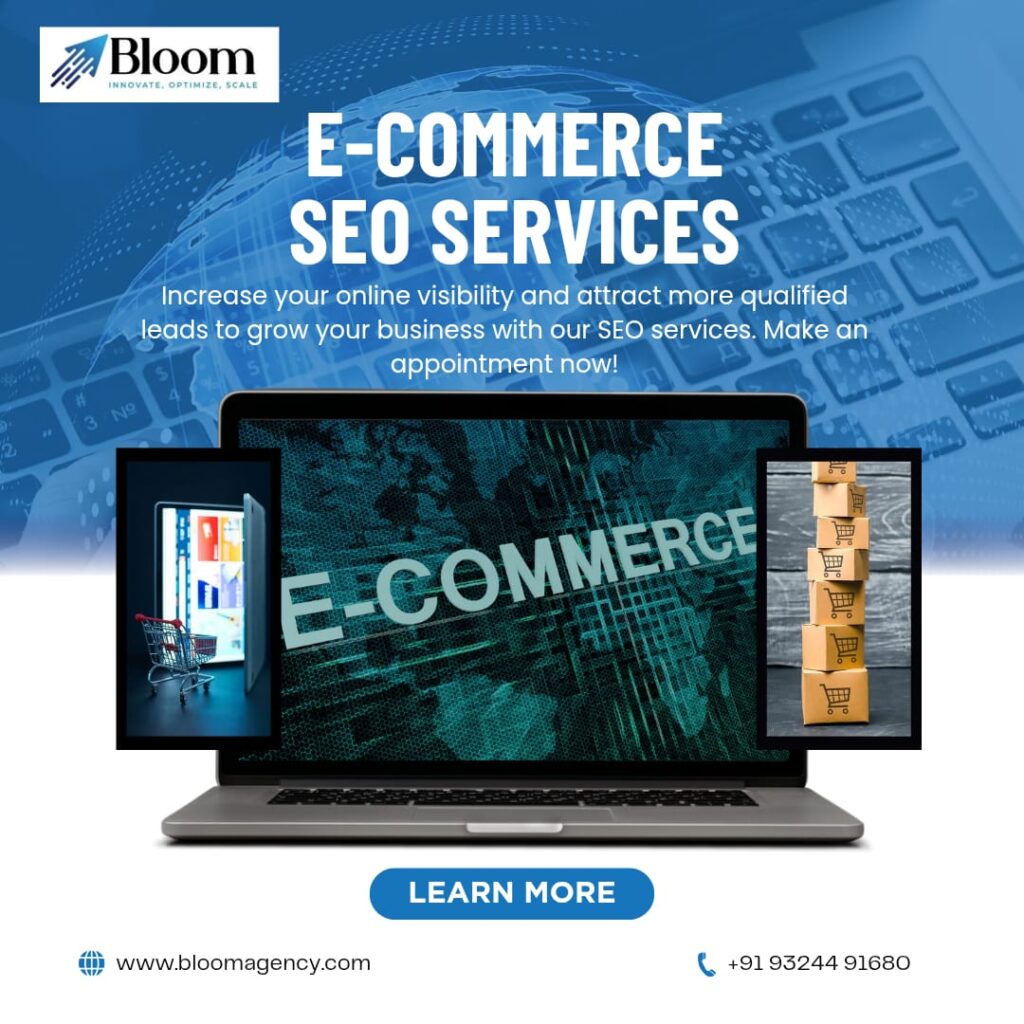(SEO) is the process of increasing a website’s visibility and attracting targeted traffic through organic (unpaid) search engine results. The main purpose of SEO is to increase your website’s position in search rankings for specific keywords related to your business.
Higher rankings help your website reach more potential customers, leading to increased traffic, increased brand awareness and ultimately more conversions such as sales, inquiries or registrations for your business – the main focus of the Bloom Agency.
(SEO) involves both the technical setup of your website and content-focused best practices that make it easier for search engines like Google to crawl, understand and rank your pages. It also improves the user experience, ensuring that visitors can easily navigate and find valuable information.
Important SEO tasks include creating high-quality content, optimizing pages around targeted keywords, and building backlinks to increase authority and credibility.
The biggest benefit of ranking for specific keywords is the ability to attract consistent, “free” organic traffic from month to month.
This guide from the Bloom Agency explains:
- Why SEO is important
- How does SEO work?
- Main types of SEO for better visibility
- Why is SEO important?
Simply put, search is one of the biggest sources of web traffic. This applies to businesses in a variety of industries – and it’s equally true for the Bloom Agency’s own website.
As studies like Backlinko have shown, over 78% of their total traffic comes from organic search, showing the real impact of SEO.
To understand this better, let’s look at a practical example. Imagine you run a party supply company. According to SEMrush’s keyword overview tool, approximately 33,000 people search for “party supplies” every month in the US. Since the first result on Google captures about 27.6% of all clicks, ranking at the top can bring more than 9,000 visitors per month – from one keyword.
SEMrush’s potential traffic metric also estimates how much traffic a keyword can generate based on factors such as authority score, potential ranking position and competitive performance.
Now, if the average cost per click for “party supplies” is $1, those 9,000 visitors will have a monthly traffic value of about $9,000 – traffic you can get for “free” through SEO (except for time and optimization costs).
And that’s just one keyword. When your website is SEO optimized, you can rank for hundreds or thousands of keywords with a single piece of high-quality content.
The real power of SEO lies in what the traffic means to your business. For example, if even 1% of these visitors convert to customers and your average order value is $50, you can earn around $4,500 per month – from one well-optimized post.
This is the lasting potential of SEO – sustainable, scalable and high-converting traffic that continues to grow your business is a core strategy adopted by the Bloom Agency.
Table of Contents
ToggleOrganic vs Paid Results

Search engine results pages (SERPs) are divided into two main sections – organic and paid results.
Organic search results are unpaid listings that appear because search engines like Google consider them to be the most relevant, reliable and authoritative sources on a topic. These rankings are determined by hundreds of ranking factors, including content quality, keyword optimization, backlinks, and user engagement.
In contrast, paid results (or search ads) are ads that appear above or below organic listings. These are completely separate from organic rankings and are based on factors such as ad bid, quality score and targeting settings.
When we talk about SEO, we’re specifically referring to strategies that help your website rank higher in organic results, not paid ads.
SEO vs SEM
While SEO ocuses solely on organic traffic – improving website visibility without paid marketing –
SEM (Search Engine Marketing) is a comprehensive strategy that includes both SEO and paid advertising to maximize visibility in search results.
Simply put:
- SEO = organic traffic through optimization
- SEM = SEO + paid advertising for faster reach
If you want to learn more, Bloom Agency also provides a detailed description of the key differences between SEO and SEM to help you choose the right mix for your goals.
How Search Engines Work

Think about how you got here – you probably searched for “what is SEO” or something similar. Search engine algorithms analyze billions of web pages in real time to provide you with the most relevant and valuable results.
Search engines like Google rely on complex algorithms that evaluate factors such as:
- Search order relevance (how closely your content matches a search)
- Website Authority (Credibility based on backlinks and domain reputation)
- User experience (page speed, mobile friendliness and ease of use)
In short, the goal of a search engine is to provide the best possible answer to a user’s question.
And SEO, performed by the Bloom Agency, helps your website become one of the best answers – visible, reliable and optimized for success.
When you search for something online, Google scans its index of hundreds of billions of pages to find the most relevant results for your search. But how do you decide what is “best”?
Although Google never reveals the full list of ranking factors, we do know some of the key signals it uses. The crawlers (or bots) navigate the web, reading pages, internal and external links and other elements to understand the purpose and content of each page.
Once a page is crawled and indexed, Google’s ranking system evaluates it based on factors such as relevance, authority and usefulness – all of which determine whether (and how high) your content appears in search results.
1. Relevance
Relevance measures how well a web page matches the intent behind a search.
For example, if someone searches for “chocolate chip cookie recipe,” they expect to see a page about cookies, not car tires. The more accurately your content satisfies the search, the higher the chances of ranking.
But relevance alone is not enough – as there can be thousands of relevant pages for a topic. This is where authority and utility come in.
2. Rights
Authority reflects how credible and reliable Google finds your content. This credibility is greatly influenced by backlinks – links from other websites that refer to your page.
When your site earns links from reputable, high-quality sources, it signals to Google that your content is worth ranking higher. These links, also called backlinks, act as a declaration of trust.
The more high-quality and contextually relevant backlinks you have to your page, the stronger its authority. At Bloom Agency, our SEO experts use advanced link building and outreach strategies to help websites naturally gain this type of authority.
3. Utilities
Even if your page is relevant and authoritative, it won’t perform well if users don’t find it useful.
Usability focuses on user satisfaction – how valuable, readable and engaging your content is. Google emphasizes user experience signals such as:
- Click Through Rates (CTR)
- time spent on a page
- escape frequencies
If visitors consistently engage with your content, Google considers it useful and beneficial to users, potentially increasing its rankings.
That’s why Bloom’s SEO strategy always prioritizes clear formatting, easy navigation, fast loading speeds and useful graphics to improve the user experience.
Types of SEO

Three main pillars of SEO work together to improve your visibility:
1. On-Page SEO
On-page SEO focuses on optimizing the content and structure of your website for both users and search engines. These include:
- Use naturally targeted keywords throughout your content
- Customize title tags, meta descriptions and URLs
- Adding internal links and images that add value
- Write clear, well-structured content that meets search intent
Using your keywords in title tags and URLs helps Google understand what your page is about. But remember – keyword stuffing (excessive use of keywords unnaturally) can hurt your rankings.
Also optimize your meta description to encourage clicks. Although not a direct ranking factor, a well-written description can significantly increase your CTR.
Finally, optimize your images by using descriptive filenames and alt text, as search engines rely on these signals to interpret image content.
2. Technical SEO
Technical SEO ensures that search engines can easily crawl, index and access your website. Without a technically sound foundation, even great content cannot be ranked.
Key aspects include:
- Create a clear website architecture with internal linking
- Ensure mobile optimization (since Google uses mobile-first indexing)
- Improve page speed using tools like Google PageSpeed Insights
- Secure your website with HTTPS encryption
- Fixing broken links and redirection issues
A technically optimized website gives users a better experience and makes it easier for Google to understand and rank your pages.
3. Off-Page SEO
Off-page SEO refers to activities done outside of your website to build authority and trust.
The most effective strategy is link building, where you earn backlinks from reputable and relevant websites. Other methods include:
- Guest posts on related sites
- Leverage digital PR for brand mentions
- Engage on social media platforms to increase visibility
Remember – not all links are created equal. A few high quality backlinks from relevant domains are much more valuable than hundreds of low quality backlinks.
How to Boost Your Website With SEO

Mastering SEO takes time and consistency. Start with these key steps:
- Conduct in-depth keyword research using tools such as SEMrush or Google Keyword Planner.
- Create SEO-optimized content that addresses user intent.
- Measure performance regularly with Google Analytics and Search Console.
At Bloom Agency, we help brands grow their organic presence using a holistic approach – combining on-page excellence, technical precision and off-page authority to achieve lasting results.








Rahul M.
B2B Service Provider